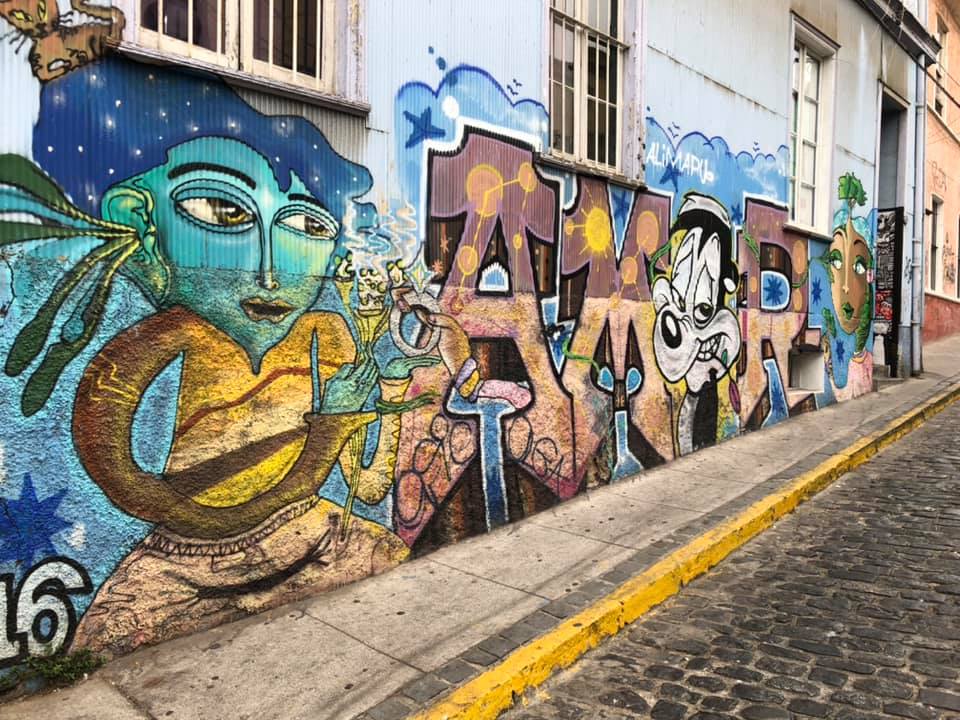OALP XIX Seminar 13 (Chile Part 1)
Categories: Uncategorized
Saturday, February 15, 2020
We all met at the OKC airport to begin our travel to Chile. We handed out all the travel information and everyone started the process of getting checked onto the flight and through airport security. We had a few hours to hang out in the airport before our flight to DFW. Before you knew it, we were off and had already landed in Dallas. After getting off the plane, we all went in different directions for dinner at DFW before catching our overnight flight to Santiago, Chile.
Sunday, February 16, 2020
We arrive in Santiago bright and early, and we were met by our tour guide, David Erazo. After going through various check points, we boarded a charter bus and arrived at the Museum of Pre-Columbia Art, where we learned about much of the Chilean history. After visiting the museum, we walked to the capitol building and saw the President’s building. We went to El Galeón Restaurant in the central market and enjoyed various seafood options, a Chilean drink of choice, and delicious empanadas. We then rode through Santiago and viewed the Mapocho River, which means people of the land. The river divides Santiago in two.
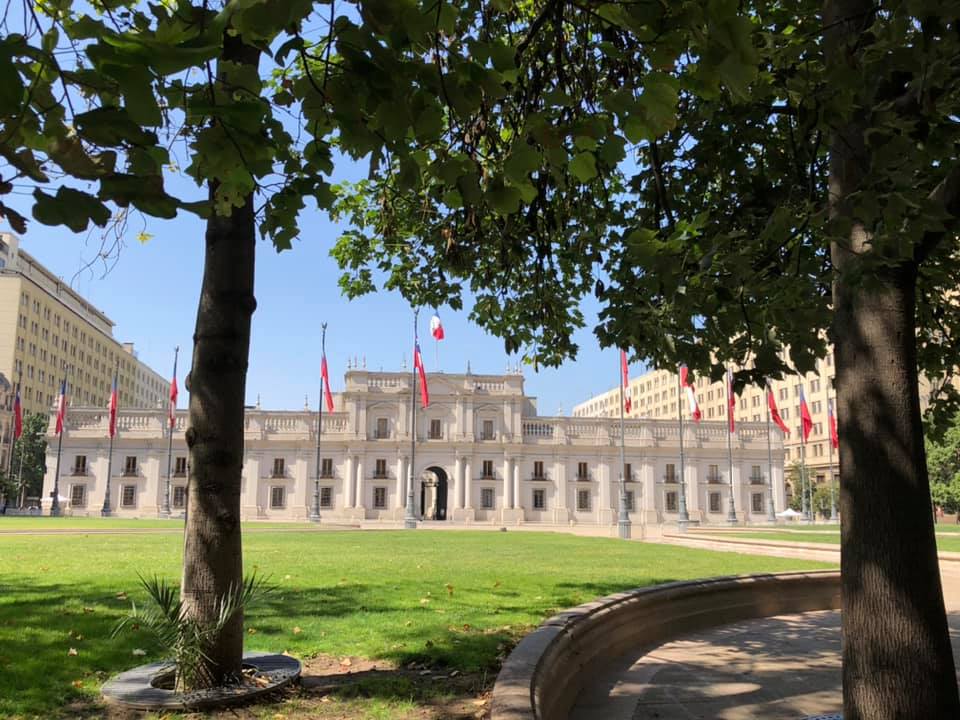
We also drove through the financial district which local Chileans call Sanhattan. We saw the tallest building in Latin America, Gran Torre Santiago, a 62-story skyscraper. At the Artisan Market we were able to see various handmade items such as jewelry, sculptures, and clothing made from alpaca. There were also many live animals for sale such as rabbits, guineas, and various birds. After shopping, several of us enjoyed drinks at Mote con Huesillo. We later arrived at Hotel Torremayor Lyon for the evening of relaxing by the pool and dinner.
Monday, February 17, 2020
Our first visit was to the wholesale market where we met Enrique to learn about the market. The market is 50 years old and features agricultural products from all over Chile, mostly fruits and vegetables. We learned this is mostly for domestic production. Our tour of the market involved sampling produce and discussing the dynamics of food logistics in Chile.
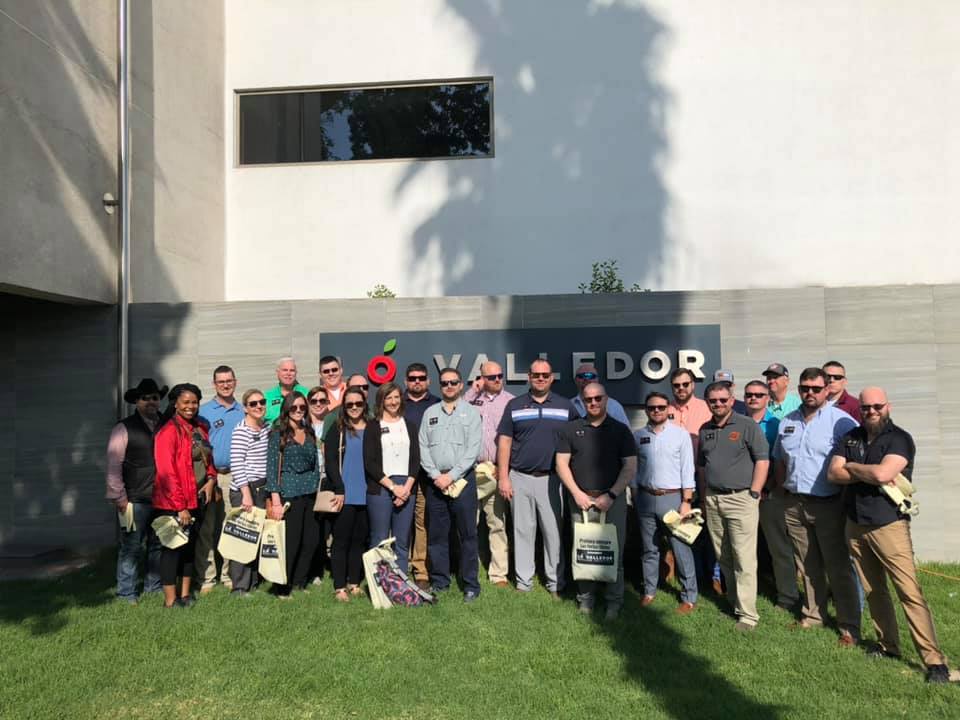
Next, we headed to Coaniquen, a rehabilitation center for burned children. We learned they typically rehabilitate around 8,000 children per year at their three facilities. After meeting several burn patients and spending time with them, we toured the rest of the facilities. The depth of the integrated approach was explained. These include not only direct services, but family care, psychology, community, education, etc. We also learned the entire organization was started by a doctor who recognized the need for post-acute burn care after he witnessed a child that was severely burned and saved in the hospital, but no facilities existed to do rehabilitation.
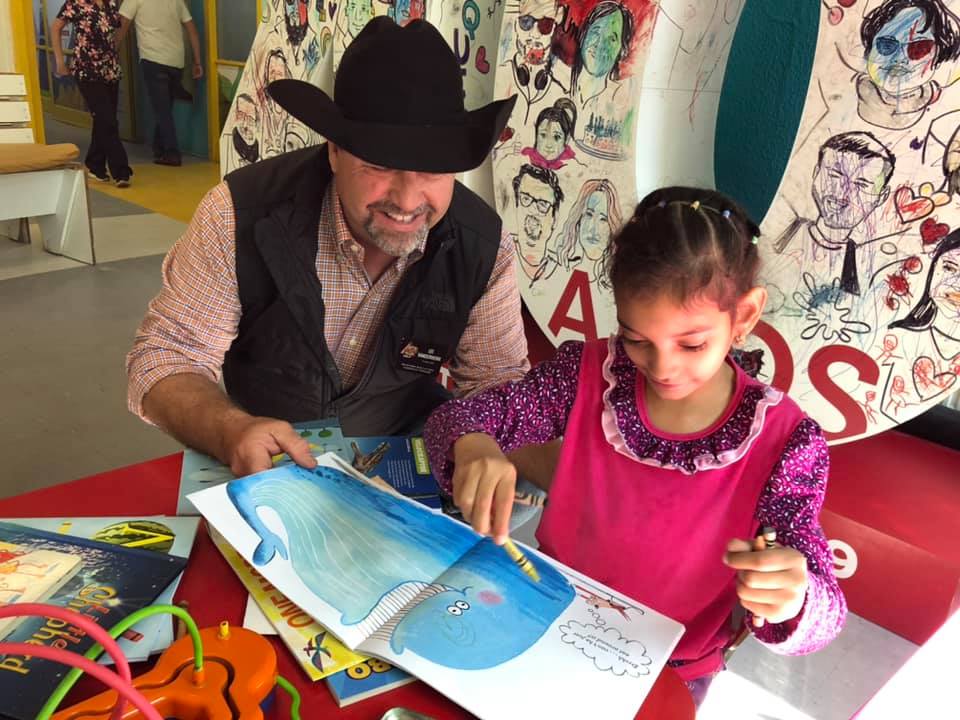
In the afternoon, we had a presentation, followed by Q&A at CORFO. We learned about their many public investments in innovation and entrepreneurship, as well as capacity building. The group traveled back to the Funicular that we tried to visit yesterday but was too busy. In Spanish, “ar” typically designates an infinitive verb form; therefore, this suggests the English translation is “to funiculate,” which is hilarious! The view from the top of San Cristobal Hill was spectacular! We ended the day with a lovely dinner, and Gregg Pickens told many jokes.
Tuesday, February 18, 2020
We first heard from Miguel Galdos, the Regional Director of U.S. Wheat Associates in Santiago. Chile’s population of over 18 million people consume a little over 2 million metric tons of wheat annually. The U.S. exported 1.26 metric of hard red wheat to Chile in 2019. The U.S. wheat has increased its regional market share from 19% to 31% from 2018 to 2019. The average amount of bread a person in Chile consumes annually is roughly 200 pounds.
We also met with the Foreign Agricultural Service from the U.S. Embassy. The number one U.S. export to Chile is beer at $160 million and number two is pork at $120 million. The U.S. exports $1.1 billion of agricultural products to Chile annually and we import $300 million of products. The U.S. has had a free trade agreement with Chile since early 2004.
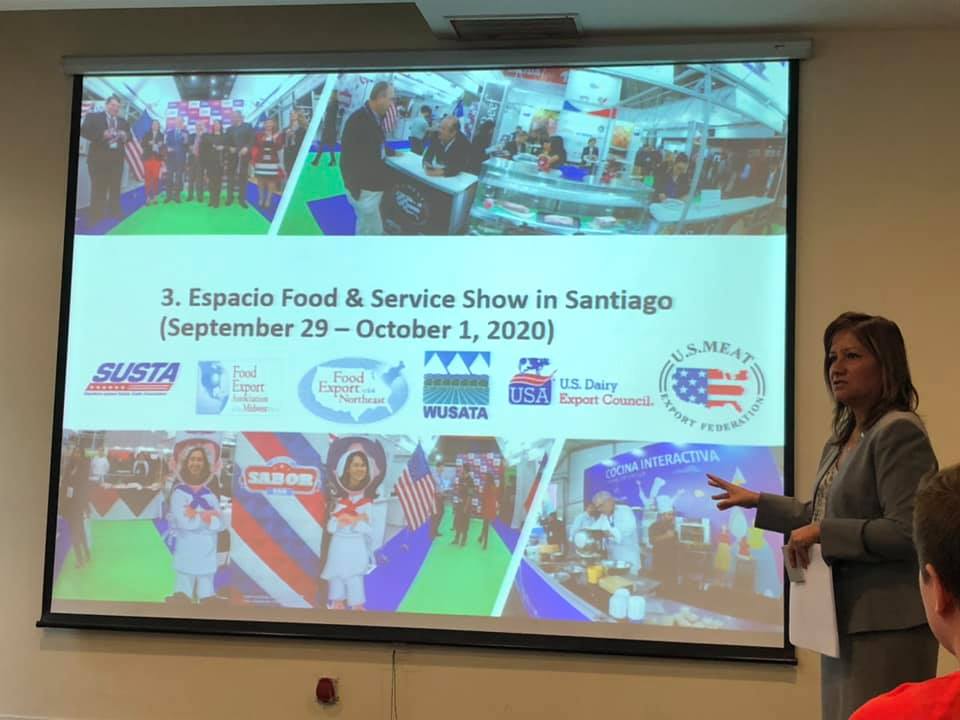
Lastly, we visited the National Society of Agriculture. It was established in 1838 and is one of the oldest agribusiness associations in the world. They represent 90% of farmers in Chile. They are the number one exporter of grapes, cherries, and blueberries in the world, second in avocados, and third in berries and nuts. The average size of a farm in the Chiles is about 20 acres because of the orchard farming.
Wednesday, February 19, 2020
Our first stop of the day was Perez Cruz Family Vineyards. The 1,300-acre vineyard was huge and overlooked a beautiful valley and had some of the best views we had seen on the trip so far. The vineyard specializes in Cabernet Sauvignon and they first planted those grape vines almost 27 years ago. We learned about the horrible 10-year drought they had been going through and unfortunately, they could only plant grapes on less than half of the 1,300 acres. We then went into the wine cellar where we witnessed more than 4,000 barrels filled with yummy wines, and of course we had to taste test. We learned that barrels can determine the taste of the wine and help with the aging. They use American oak and French oak barrels. We had a friendly competition who could identify which barrel was American and which was French. We also saw how they processed the grapes in a large machine. We ended the tour by going into the wine rooms and gift shop. Edmond was also honored with his fearless nickname “Big Papa” by our tour guide.
Roberto and Teresa Barrientos hosted us next at their Los Tres Vineyard, which is a small, organic vineyard. They were only able to irrigate once this year because of the 10-year drought, but from the look of the grapes, they were managing their operation well. Unlike the last vineyard, we learned about their fertilization and that they use the nature around them, and by nature, I mean horse manure. The harvest mechanism was also different from the previous stop. They have 20 people who help them, and it only takes them about two days to fully harvest all the grapes. They produce around eight tons of grapes each year which equals out to about 1,800 bottles they sell to the public. We also enjoyed a lovely Chilean lunch and great conversation with the winery owners.
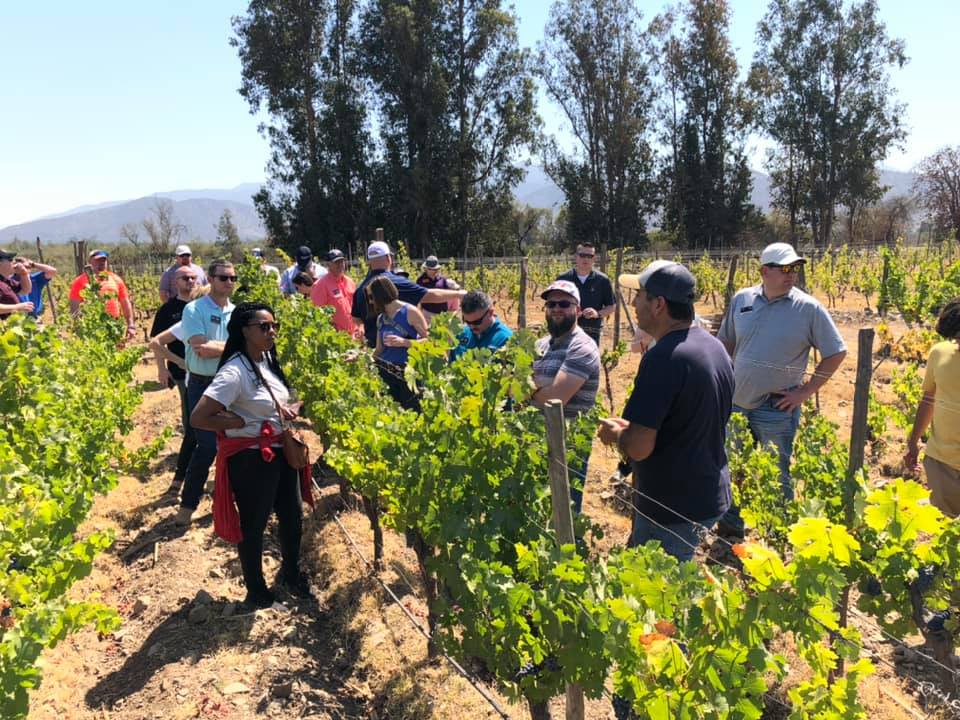
We continued our adventure on the bus while we enjoyed the air conditioning, some water (sin gas) and a quick cat nap. We then arrived at an experimental station that consisted of about 30 acres of different crops grown in Chile. We saw A LOT of corn and sunflower. They explained genetic improvements of the select crops and how they experiment with seed-producing companies in the U.S., Europe, and Japan. We enjoyed a sunny walk of the 30-acre facility and even observed what the corn and sunflowers looked like before harvest.
Thursday, February 20, 2020
We started at a USDA/APHIS fruit inspection site called Los Lirios. All the fruit inspected and approved there will go to the U.S. This is one of six inspection sites across the country. Chile has 22 land ports of entry, 9 ports of entry by air and 17 seaports. Chile is the top exporter of fruit in the Southern Hemisphere, exporting about 90 products. The class toured the facilities. Fun fact learned: Chile does not have any fruit flies in the country. They use 15,000 pheromone traps which are checked every 5-7 days to monitor for it, and they have a male sterilization program where they release 8,000 sterile male flies in Santiago.
The second stop of the day was with Martin and Sebastian Cartwright. They own La Ponderosa Company. Martin did not grow up in the agricultural world. Originally from Chile, he moved to New Zealand after graduating high school. While in New Zealand, he studied/worked in agriculture for seven years. In 1980, he moved back to Chile to take care of his parents and in the meantime bought his first piece of land. Now he has 247 acres that consist of cherries, pears, plums, nectarines, and apples. Cherries are Chile’s biggest export. About 94% of the cherries grown in Chile are exported to China. The Cartwrights produce 7.7 tons of cherries per acre while the national average is 2.2.
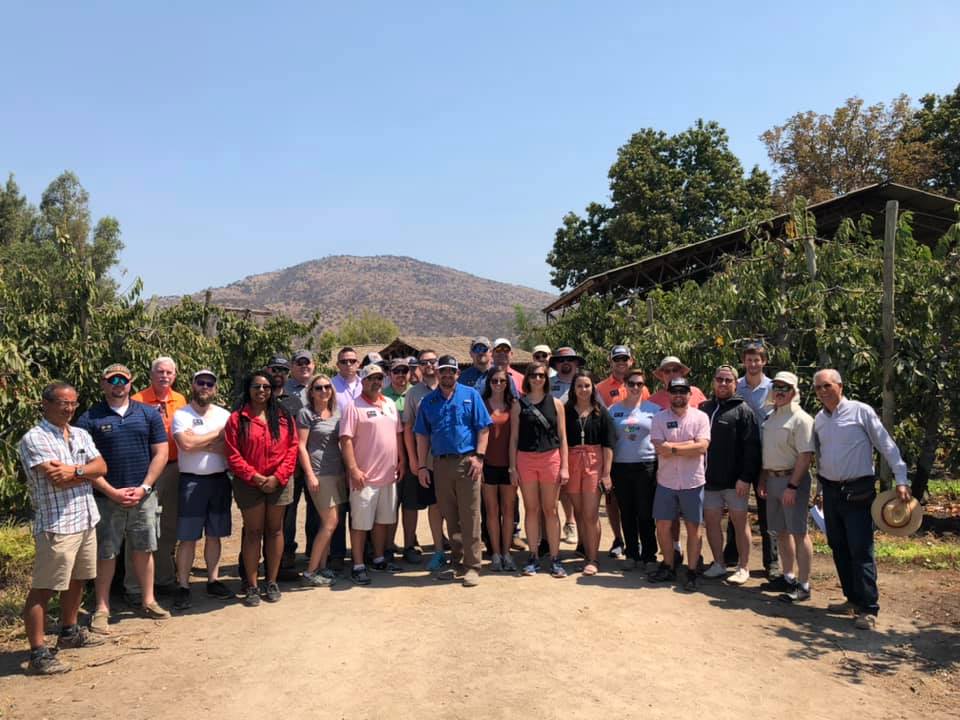
The last stop of the day was the Ministry of Agriculture Center. The center has a big breeding and research program, primarily for cherries and walnuts. The center is testing between 4,000 and 6,000 seedlings of cherries and have found 16 new varieties. The research done on walnuts has been very limited. Currently, they are only researching trees that have been infected with root rot. Next, we learned about CEAF (Center for Advanced Studies in Fruit Growing). CEAF promotes and studies the impact of sustainability of the food chain in Chile. Finally, we heard about the decade-long drought happening in Chile.
Friday, February 21, 2020
Our first visit was with Fransisco Villalon, General Manager of A.C. Baldrich – Chile. This alfalfa seed production company has been in business for 60 years. In the past, they raised seed for the U.S. but now it is all for South America. They produce seed and send to dealers. They provide technical assistance and teach the retail sales team about their seed. They are the only company to produce alfalfa seed in Chile. Deep well irrigation is only operating at half capacity for their seed production because of the drought. They only grow alfalfa on their own land, roughly 400 hectares. They grow in both rows and flat. Rows provide more flowers per square foot and is better for bee pollination, although it is more expensive but produces higher yields. Flat requires less seed to plant and is cheaper, but the bees are not able to pollinate as well and therefore produces less.
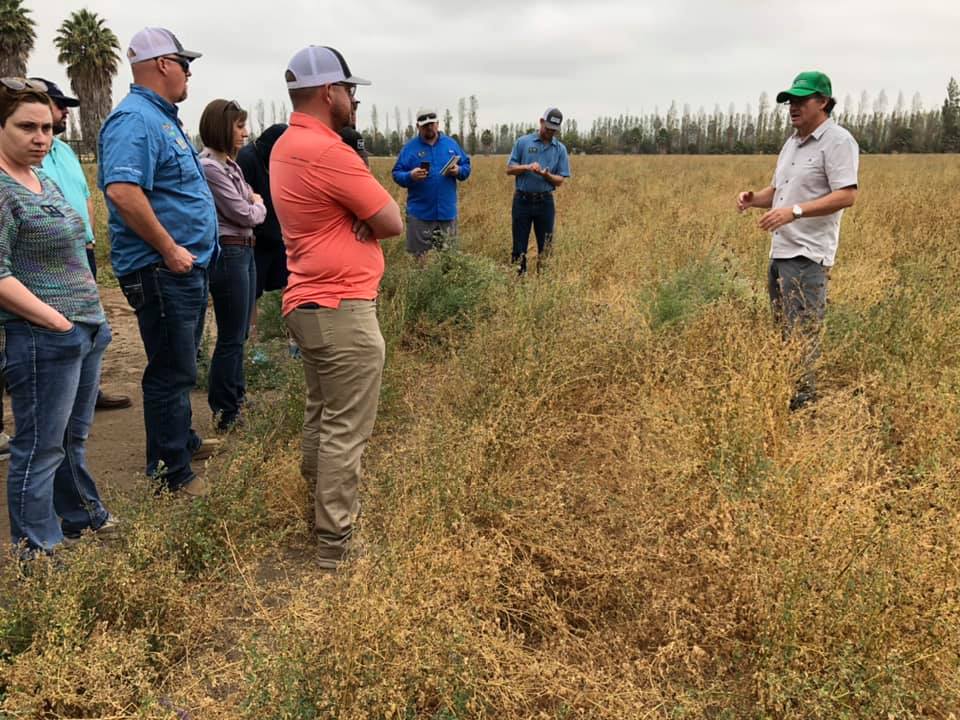
All of their fields are bordered by trees to slow the wind which causes seed loss at harvest. Also, the trees protect the bees from the wind. Normal production is 800 to 1,000 kilos per hectare of clean seed, although this year will be down 15-20% due to the drought. While we were there, we watched them install drip tape. They are increasing their drip irrigation by 30 or so hectares per year. Their rotation includes one year of durum wheat in between alfalfa crops. Their primary focus in breeding is on tonnage and not so much on quality. Their alfalfa will generally yield 20-22 metric tons per hectare and the market is generally a flat price. They have 10 hives of bees per hectare for pollination. We found it interesting that they use iron to coat the seeds and the iron binds to weed seeds of dodder in the cleaning process because it is very difficult to clean and sort such small seed and then magnets are used to remove the dodder.
After lunch, we visited the Nieto Family Farm. Luis and Ivan are two brothers who have taken over the family farm. They currently grow produce for local farmers markets. All the vegetable byproducts are fed to their cattle. They package and label the produce on farm. They have invested in two drones to fly for scouting and spraying their fields. We finished the day with a drive to Valparaiso and dinner at an oceanside restaurant.
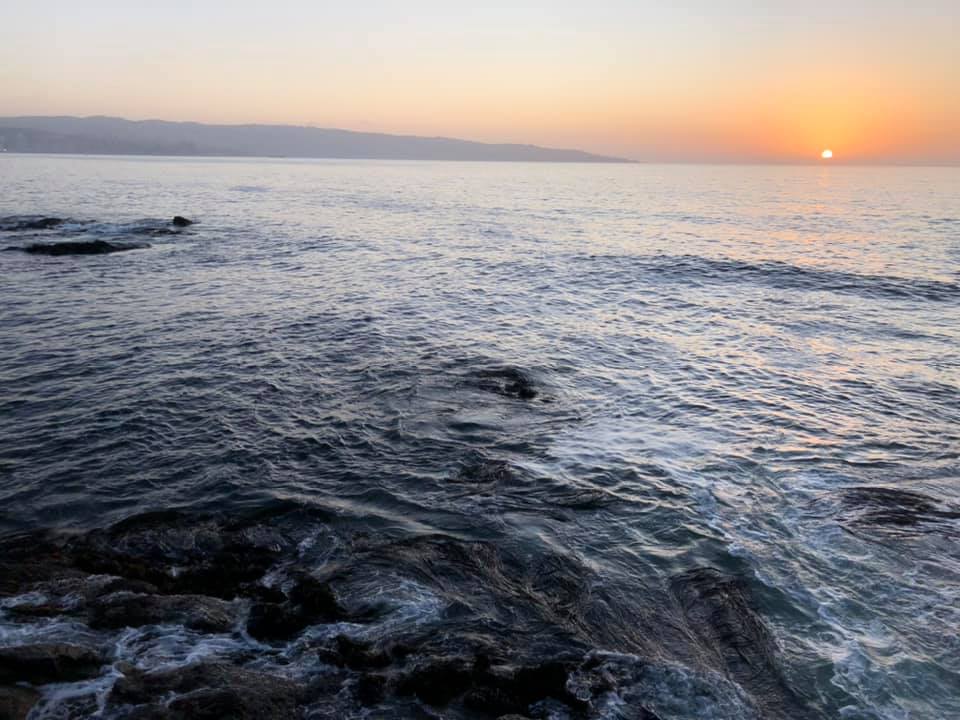
Saturday, February 22, 2020
This morning, we walked around Valparaíso, where the famous street writing and art was displayed across the palettes of building structures. It was amazing to hear the story from our guide and feel and see the personal expression through their art. This art, that many at first thought was just vandals marking on buildings, is now a World Heritage Site. It is an interesting transition to getting thrown in jail for doing it one day and then getting paid to do the exact same thing months or even days later. Later in the afternoon we flew south to Temuco where we would start the next leg of our journey.
